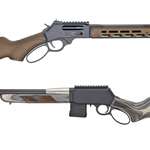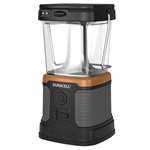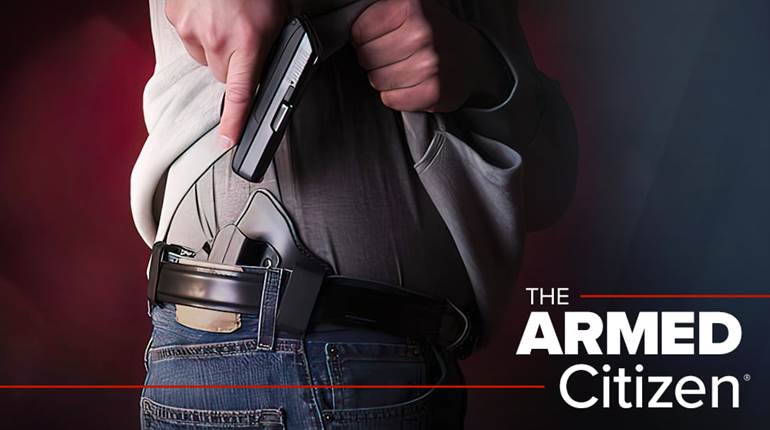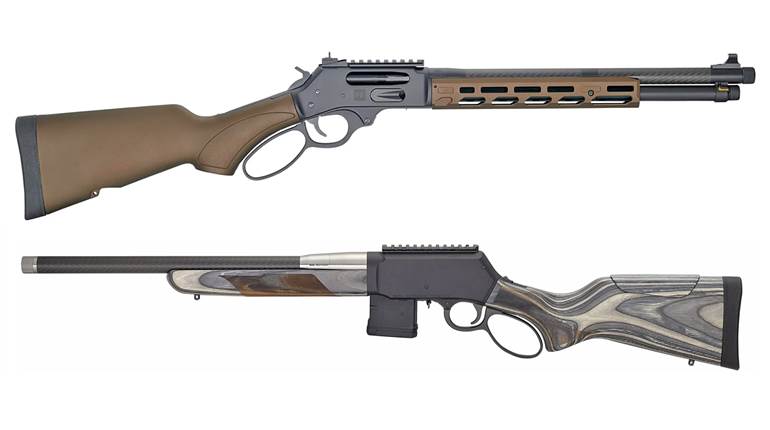
Rock Island Armory, a division of Armscor, offers a broad selection of 1911-pattern pistols that can't be found anywhere else in the marketplace, including the company's proprietary .22 TCM, Tactical 10 mm and full-size .22 Mag. options. Last year, the company released a new reduced-size 1911 pistol for concealed carry. Nicknamed the Baby Rock, it’s chambered in .380 ACP.
The Baby Rock features carbon-steel construction with a matte black Parkerized finish. The right side of the frame is stamped M1911 A 380, and the pistol, with the exception of a few internal changes, sticks to the modern 1911 design. Every component has been scaled down to fit the smaller .380 ACP cartridge. With an overall length of 6.62" and height of 4.62", the 3.75" barrel is fitted into a slide that's 5.41" long and 0.76" wide. The grip is only 1.10" thick (including the soft black rubber grip panels) with a front-to-back length of 1.66" and just enough room for all three fingers of the shooting hand. With an unloaded weight of 22 oz. it should be a great fit for most shooters, except those with larger than average hands.
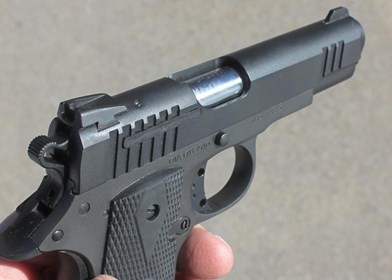
The round-top slide features front and rear slide serrations, a flared ejection port and a substantial claw on the right-side extractor. The sights consist of a removable dovetail front sight blade and a low-profile combat rear sight. The barrel is held in place at the front of the slide by a traditional removable barrel bushing and recoil spring plunger. Removing the slide from the frame reveals a single round wire recoil spring supported by a short guide rod. The barrel is not linked but has a fixed extension to support the recoil assembly. The frame's feed ramp and the lip of the barrel's chamber have been polished to a mirror shine.
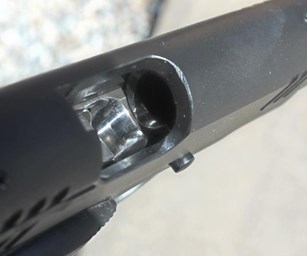
The steel frame features a smooth dust cover and a rounded trigger guard that hosts an aluminum trigger with a slightly curved and serrated face. All of the controls, although smaller, can be found configured and positioned in traditional 1911 style. The hammer is a skeletonized combat model. The slide stop, round magazine release button and thumb safety are all found on the left side of the frame. An added feature is the extended beavertail grip safety. Other more expensive models, like the Colt Mustang Pocketlite and Kimber Micro omit the grip safety all together.
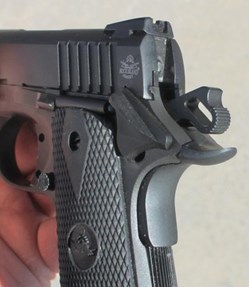
The front of the grip frame is smooth, while the aluminum mainspring housing is grooved for improved purchase with a rounded base for more comfortable shooting. Because the grip frame is so small, the diamond checkered soft rubber grip panels are a real benefit for managing felt recoil and providing a secure gripping surface. The Baby Rock arrives with two seven-round flat-base blued steel magazines with steel followers and witness holes on the right side.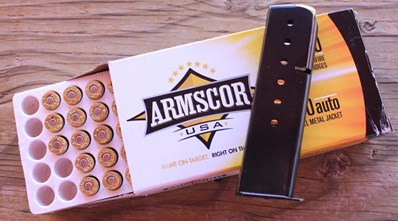
For the most part, I was impressed with the overall fit and finish of this pistol. The slide felt smooth right out of the box as did the trigger, which broke with 5 lbs 6 oz. of trigger pull. The only problem I saw in the course of running bench checks was purely cosmetic. The finish used on the aluminum trigger and mainspring housing were already showing signs of wear and chipping even though the pistol had not yet been fired. Considering that this pistol has an MSRP that's about $200 less than competing 1911 .380 pistols, I wouldn't consider this minor finish issue a deal breaker.

At the shooting range the Baby Rock proved to be utterly reliable with a variety of practice and defense-grade .380 ACP. All of the controls ran properly with the magazine dropping free of the grip frame when the magazine release was depressed. The grip felt good to hold on to and the sight system was easy to see (which is not always the case with small carry pistols). Like its larger .45 ACP compatriots, this little 1911 could be a bit of a handful when shooting hotter loads of ammunition. Although the kick was by no means punishing, it could possibly be a bit much for brand new shooters or those who are sensitive to recoil.

Formal five-shot group accuracy testing was conducted at seven yards using a Hyskore Swivel Pistol Rest. Because Armscor also manufactures ammunition, the company sent along a supply of 95-gr. full-metal jacket rounds that produced a best single group of 1.53" with a five-group average of 1.82". Federal Premium Personal Defense 99-gr. HST hollow points turned in a best group of 1.70" with an average of 1.98". The load this pistol liked the best of the test set was Black Hills 90-gr. jacketed hollow points with a best group of 0.99" and an average of 1.28"
The Rock Island Armory Baby Rock .380 ACP pistol is an easy-to-carry concealment pistol that fans of the 1911 pistol will appreciate. It's impressive that Rock Island tacked on several custom features, including the removable front sight, forward slide serrations and beavertail grip safety, while keeping the price tag affordable. Much like the Rock Island M206 .38 Special revolver, the Baby Rock offers a good deal of bang for the buck.
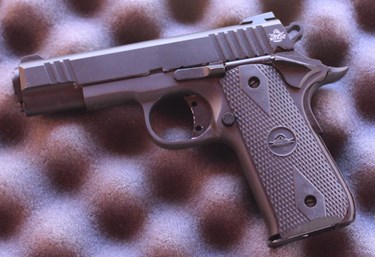
Specifications
Manufacturer: Rock Island Armory/ Armscor International
Model: Rock Island "Baby Rock" M1911 A .380 ACP
Action: Single-Action Semi-Automatic
Caliber: .380 ACP
Finish: Matte Black Parkerized
Grip Panels: Black Rubber
Front Sight: Black Blade, Dovetail
Rear Sight: Low Profile Drift Adjustable
Barrel Length: 3.75"
Overall Length: 6.62"
Height: 4.62"
Slide Width: 0.76"
Weight: 22 oz. with Empty Magazine
Capacity: 7+1 Rounds
Trigger Pull: 4 to 6 lbs.
Twist: 1:16” RH
Rifle Grooves: 6
Accessories: 2 Magazines, Hard Case, Owner's Manual
MSRP: $460












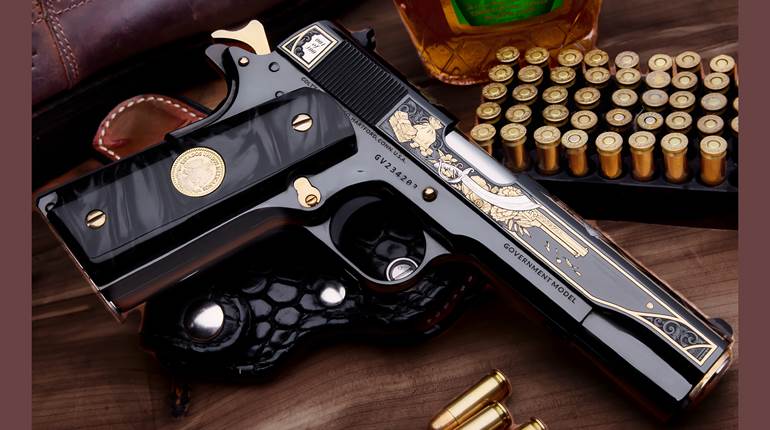
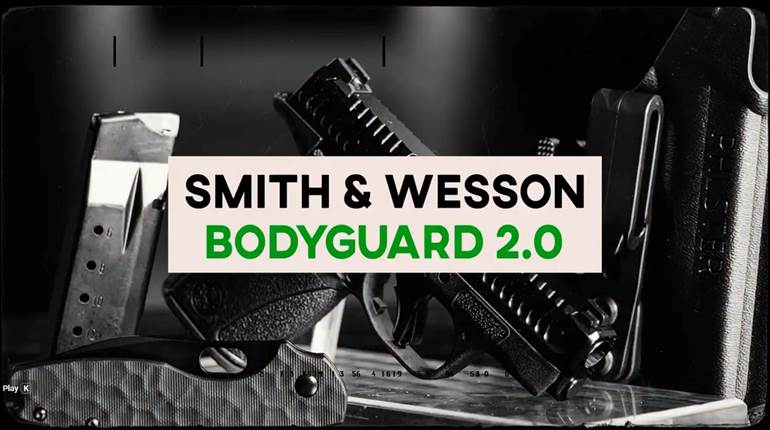
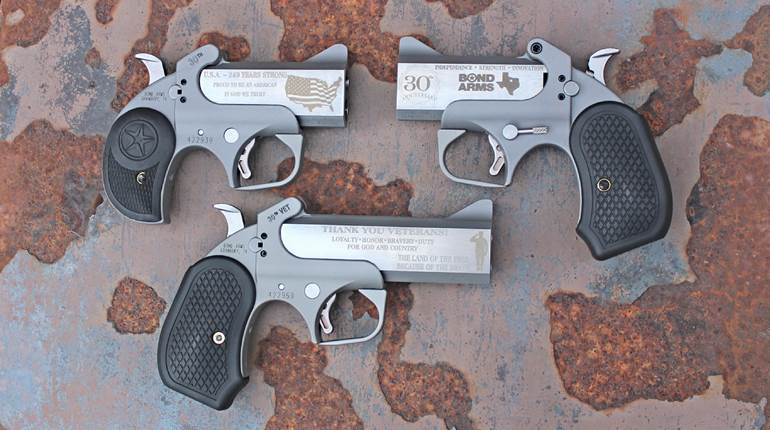
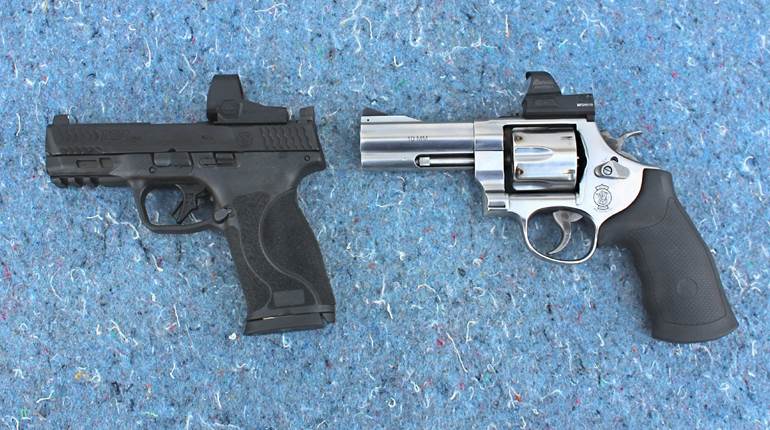
![Auto[47]](/media/121jogez/auto-47.jpg?anchor=center&mode=crop&width=770&height=430&rnd=134090788010670000&quality=60)



